Join Mark as he builds a digital vocoder using a Teensy 4.0 and audio shield, demonstrating how audio spectrum data can be analysed and used to reconstruct sound in real time. He walks through the full hardware setup, from soldering components on a prototyping board to wiring potentiometers and audio jacks, then dives into the software using the Teensy Audio System Design Tool. The result is a working vocoder capable of producing classic sci-fi effects like the Cylons from Battlestar Galactica.
Watch the Episode
From Spectrum Analyzers to Vocoders: Reconstructing Sound with Digital Tools
In this episode of element14 presents, Mark opens with a striking display—a massive audio spectrum analyzer with over 3,500 LEDs animating at high frame rates. But as Mark quickly explains, this visually impressive device is merely a decoy. Despite his history of building and sharing various audio analysers, this project takes a very different direction. Rather than visualising audio frequencies, the aim is to reverse the process—to take frequency data and rebuild the original sound. This shift sets the stage for an in-depth exploration of vocoders and real-time audio synthesis using digital hardware.
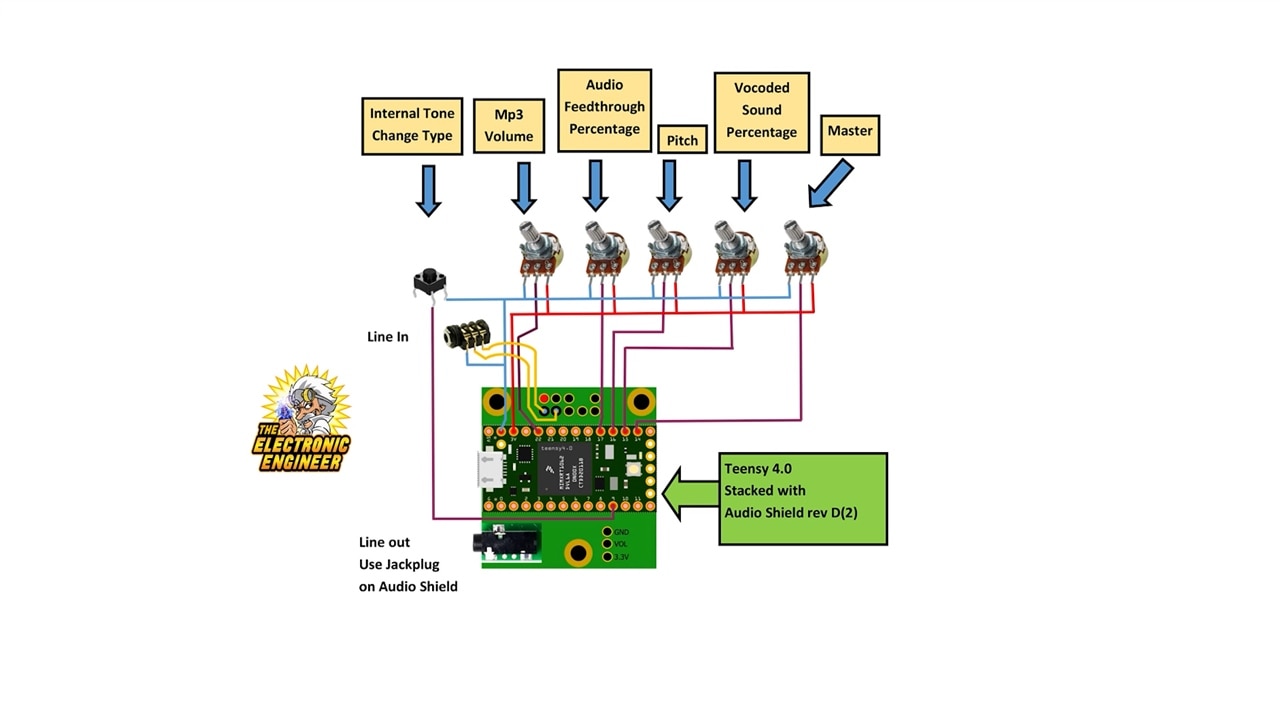
Understanding Vocoding: From Analysis to Reconstruction
Vocoding involves analysing an audio signal to capture frequency band data, then using that data to reconstruct a new audio signal. A vocoder can be conceptually divided into two main sections. The first acts as a spectrum analyser, identifying which frequency bands are present in each audio sample and how strong those frequencies are. The resulting "peak data" reflects the energy in each frequency band at a given moment. This data becomes the control input for the second section of the vocoder, where filtered signals are generated and modulated based on that information.
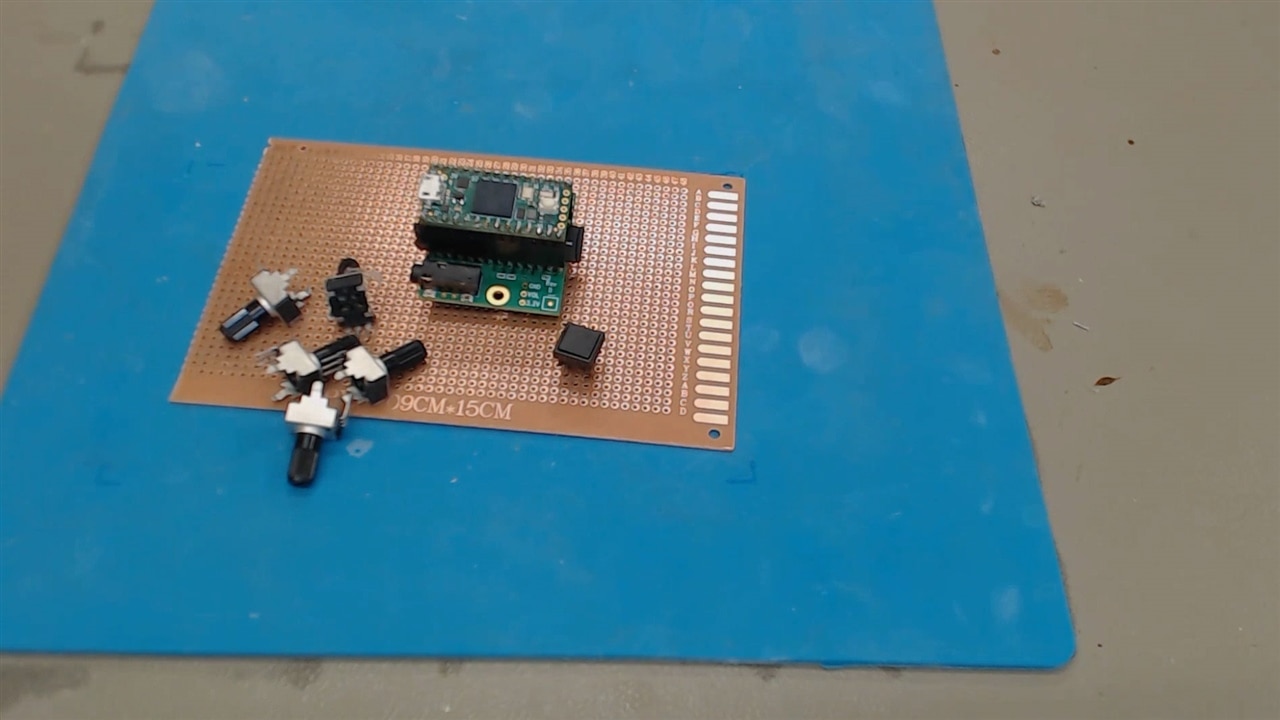
Digital Build Using Teensy 4.0 and Audio Shield
The hardware platform for this build centers around a Teensy 4.0 microcontroller, selected for its high processing speed and compatibility with real-time audio DSP tasks. It is paired with the PJRC Audio Shield (Rev D), which provides line-in, mic-in, line-out, and SD card capabilities. These features are critical for both capturing and playing back audio during vocoder operation. To provide real-time control over various parameters such as pitch, volume, and waveform characteristics, three potentiometers are wired to the Teensy's analogue inputs. A tactile push button is also included to toggle waveform modes for the internal tone generator. All components are mounted on a soldered prototyping board, a design choice that offers improved connection stability compared to a solder-less breadboard. This is essential when dealing with analogue signals that can be easily disrupted by intermittent contacts.
Mark opted to use headers and sockets on both the Teensy and Audio Shield. This does introduce additional height and board space, but the modular approach makes it easy to disassemble and reconfigure during iterative testing. One minor challenge encountered was that the Audio Shield’s header pins are not aligned to standard breadboard pitch, which required workaround wiring for audio connections. Additionally, the potentiometers used have wider pins than typical 2.54 mm spacing, so Mark pre-cut custom slots in the protoboard to accommodate them and ensure a snug fit. The final layout includes a 3.5 mm TRS jack for audio out, allowing for quick connection to external speakers or amplifiers. This hardware setup, although manually assembled and prototype-grade, proves highly capable of supporting the vocoder’s multiband filter processing with minimal signal latency.
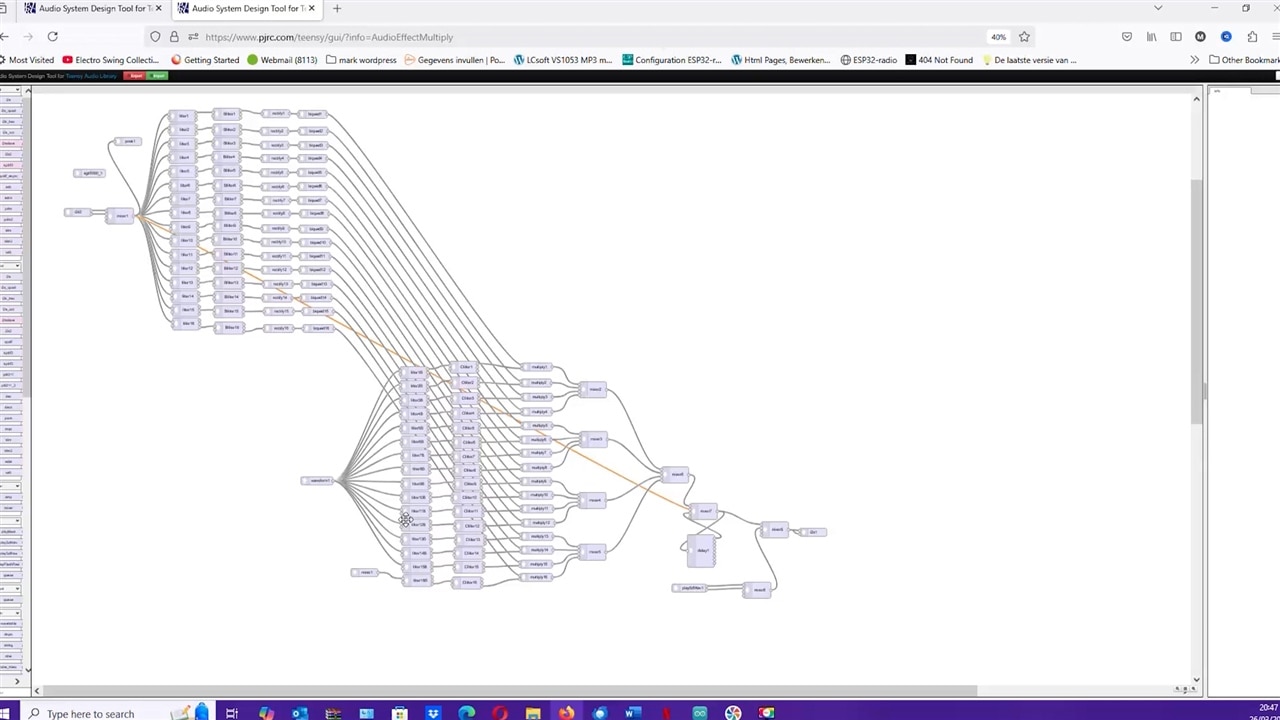
Software Workflow and Audio System Design
Using the Teensy Audio System Design Tool, Mark constructs the entire vocoder processing chain graphically before exporting it into Arduino code. The tool allows for the placement and linking of audio objects like waveform generators, band-pass filters, and mixers. On the software side, the sketch includes support for audio input via line-in or microphone, signal peak detection, real-time user controls, and playback of a WAV file from an SD card. The audio signal flow mimics the vocoder model: the analyser captures the spectrum, and a parallel path generates a new signal, modulated by the original’s spectral characteristics.
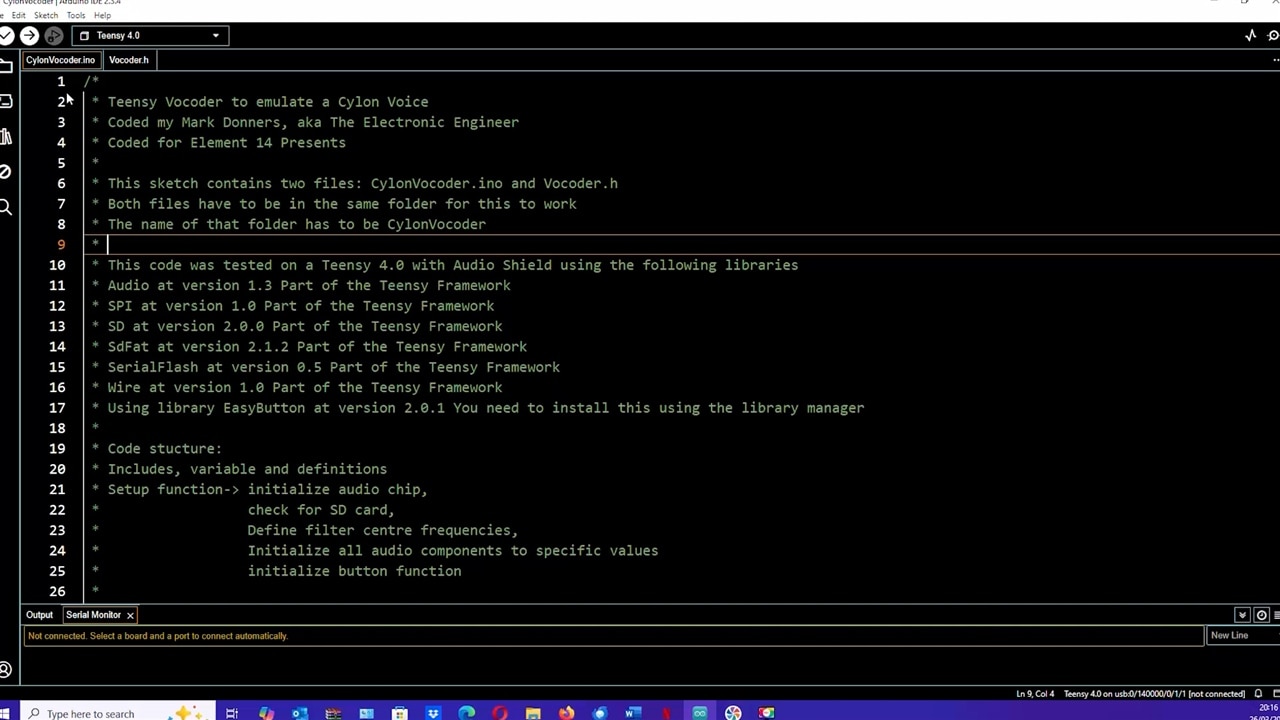
Results, Observations, and Applications
Despite the many filters and processing elements involved, latency is surprisingly low—almost imperceptible during real-time use. The final result is a functional digital vocoder that emulates the iconic robot-style voices popularised by science fiction. While this build is tuned for voice processing, the design can be adapted for musical or experimental audio applications by modifying the input sources and control logic.
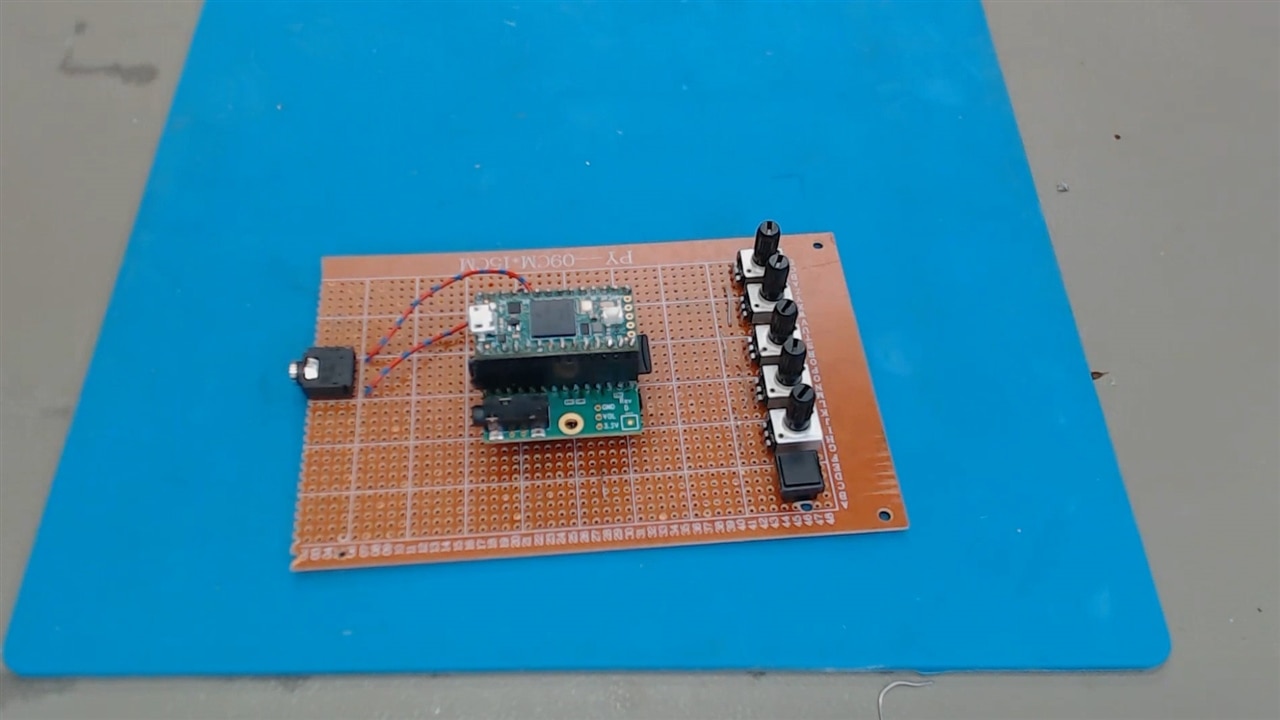
Supporting Links and Downloads
Bill of Materials
| Product Name | Manufacturer | Quantity | Buy Kit |
|---|---|---|---|
| Tactile Switch | Multicomp Pro | 1 | Buy Now |
| Potmeter 10K | Alps Alpine | 5 | Buy Now |
| Connector Stereo Jack | CLIFF ELE. Comp. | 1 | Buy Now |
| Prototype board | Multicomp Pro | 1 | Buy Now |
| Additional Parts | |||
| Teensy 4,0 microcontroller board | |||
| Teensy Audio Shield | |||


-

kmikemoo
-
Cancel
-
Vote Up
0
Vote Down
-
-
Sign in to reply
-
More
-
Cancel
-

donnersm
in reply to kmikemoo
-
Cancel
-
Vote Up
0
Vote Down
-
-
Sign in to reply
-
More
-
Cancel
Comment-

donnersm
in reply to kmikemoo
-
Cancel
-
Vote Up
0
Vote Down
-
-
Sign in to reply
-
More
-
Cancel
Children